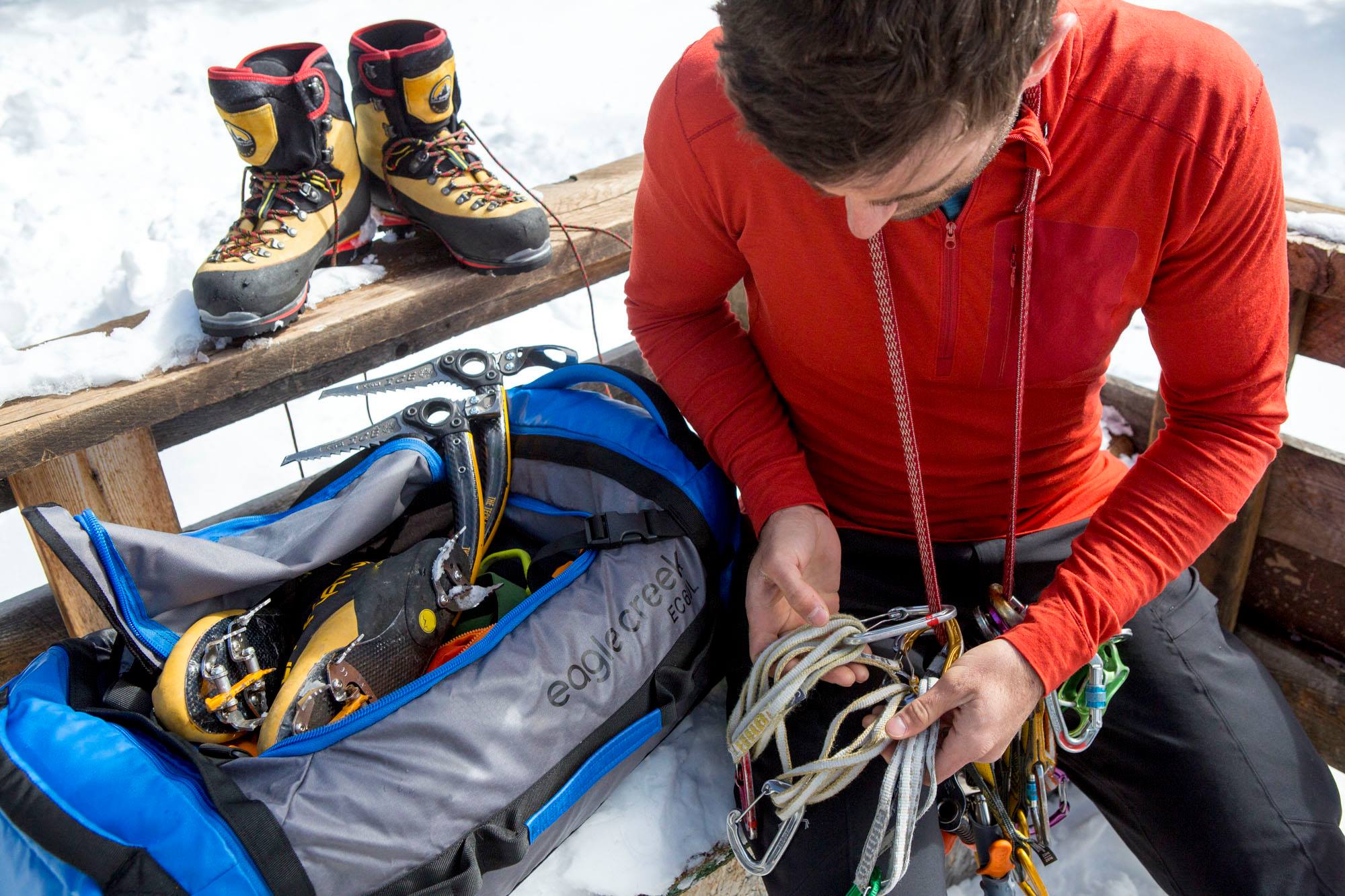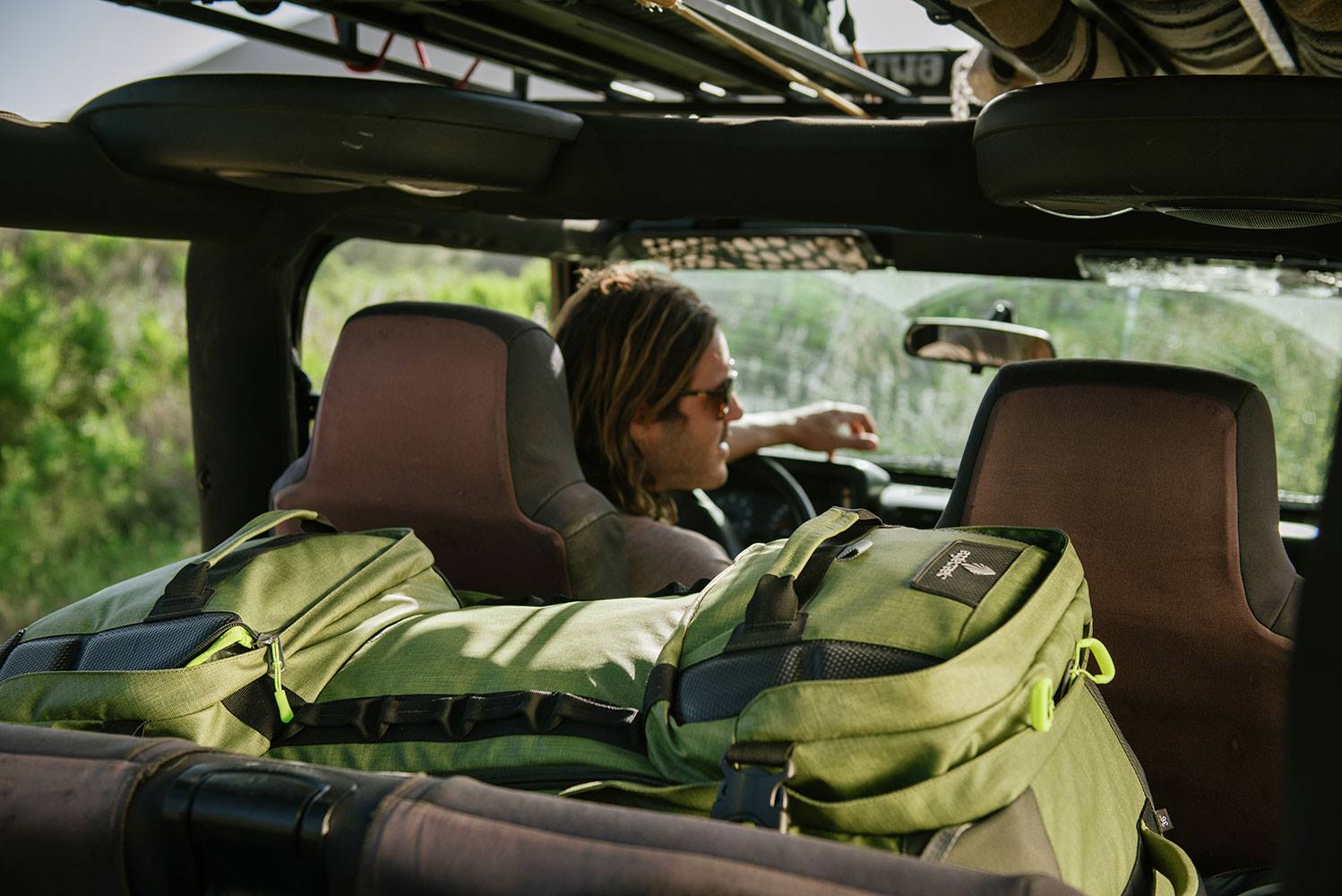When traveling abroad in search of adventure, packing duffel bags of gear to put on a plane can be one of the most stressful parts. Between over-packing, losing bags, breaking gear, or just not getting to your destination with everything you thought you needed, a lot can happen between point A and point B. But, there are ways to eliminate many of these issues. So, follow these tips to keep things as simple and stress free as possible.

Watch for Extra Fees
You have to consider a few factors when you’re flying with a lot of gear. First, make sure you are thorough in the flight planning process, so nothing gets damaged and you don’t end up needing to pay more than you had anticipated.
Specifically, pay close attention to baggage policies. Is a checked bag included in the price of your super-cheap ticket to Iceland, or is the add-on charge going to run you another $100? Many airlines also don’t include carry-on bags. If you plan on needing one, check the airline’s policy before you book.

Protect the Pointy Objects
Climbing gear can be notoriously heavy and sharp—two characteristics that aren’t the best for airline travel. But, with a little thought and planning, traveling with climbing gear can be a breeze.
Pack ice axes, crampons, ice-screws, and any other sharp gear in your checked bag, because you won’t be able to carry it on the plane. Keep these items in stuff sacks or separate compartments away from clothing, climbing ropes, tents, and other soft materials to avoid any unwanted tears or core shots.
Check the Scale
Nobody likes showing up to the airport with an overweight bag. The fees are a pain, and re-sorting your gear in front of the check-in scale is an embarrassing waste of time when you’re in a rush.
For starters, make sure your luggage stands up to the size requirements for both checked and carry-on baggage. Don’t be the person trying to shove a full-size backpack into the overhead compartment.
At home, be sure you know the weight limit for your checked and carry-on baggage. Then, pick up a cheap baggage scale, or throw your bags onto the bathroom scale. As a tried-and-true technique, weight yourself first, and then, weight yourself again while holding your bags and wearing your backpack. Simply subtract your body weight to determine the weight of your baggage. Overall, it’s a bit easier than trying to balance anything on a small bathroom scale.
Still overweight? When packing heavy gear, ask yourself, “Do I really need this?” Ahead of time, plan out climbing gear with your partners, so you don’t bring more than necessary. Sharing a trad rack and distributing the group gear to even out the load can save a lot of weight.
As another option to offset the weight of a checked bag, put small but heavy items like cams and carabiners into a carry-on bag. And, if you are on a winter trip with lots of outerwear, try wearing some of your bulkier, heavy clothing in the airport to save space.

Follow the Rules
The TSA discourages camp fuel, and in taking it along, you could lose your stove for good. So, empty and thoroughly clean out your fuel bottles before flying. Giving your stove a cleaning isn’t a bad idea, either.
Make sure to pack your pocket knife or multi-tool in your checked baggage, as knives are not allowed in carry-on luggage. When packing your camp lighters, however, put them in your carry-on. Interestingly enough, they are prohibited in checked baggage, unless they are in a DOT-approved container. Additionally, leave any aerosols at home, including bug spray in a can and bear spray. These cannot be brought along in your baggage.
When you’re traveling internationally, you’ll find that some countries take serious measures to keep out invasive plant species, as they can negatively affect the local ecosystems. New Zealand, for example, screens incoming travelers’ luggage as they go through the customs process. If travelers failed to clean their gear, customs confiscates it upon your arrival at the airport.
To avoid losing all of your camping gear, clean everything thoroughly before packing it:
- Remove the dried soil from your boots.
- Hose-off all parts of your tent, including the stakes, which often hold a lot of soil.
- Check your pole baskets for any caked-on dirt.
- Then, let everything dry completely before you pack it up.

Keep It Safe
It’s not uncommon to sweat bullets as you wait for your bags to come off the carousel. But, broken or missing gear is only one expensive problem. It’s a far bigger issue to get to a distant location just in time for a trip, only to realize you’re missing the essentials.
So, label all of your gear in a unique way, in a place where it can be read and where it won’t be rubbed or broken off. As a tip, use something like Eagle Creek’s Reflective Luggage ID Set. Paper gear tags, however, are not strong enough. Don’t be afraid to use a permanent marker to put your contact information directly onto your bags.
If you paid for a budget flight, especially an international one, several airlines won’t insure your bags. As a note, most non-budget American airlines usually include it. Gear is expensive, so it might be worth picking up temporary travel insurance, if you don’t have it already.
In travel, hold onto your luggage tags and receipts. Have proof that you handed over your bags to an airline, especially when traveling with expensive items.
It’s also not a bad idea, depending on where you’re traveling, to use a TSA-safe luggage lock. Don’t use a regular lock, however. It’s almost guaranteed to be cut off during an inspection. TSA locks, instead, can be opened by officials and then placed back on once you leave the airport.
Patrick Scanlan
Patrick is a part-time guide with the EMS Climbing School and a lifelong explorer of the forests and peaks of the White Mountains. Previously, he has worked in the High Huts of the Appalachian Mountain Club and he lived for 2 years in Tuckerman Ravine as the Caretaker of Hermit Lake Shelters. He has been involved with professional and volunteer rescue with the AMC and Androscoggin Valley SAR in Tuckerman and Huntington Ravine and the greater Presidential Range. Currently, Patrick is the program director for a backcountry skiing team of high school shredders at Carrabassett Valley Ski Academy at Sugarloaf, Maine. He is currently an American Mountain Guides Association(AMGA) Apprentice Ski Guide and Apprentice Rock Guide.
Related Posts
April 5, 2024
Book Review: Arctic Traverse: A Thousand-Mile Summer of Trekking the Brooks Range by Michael Engelhard
Take a trip to the world’s northernmost…




